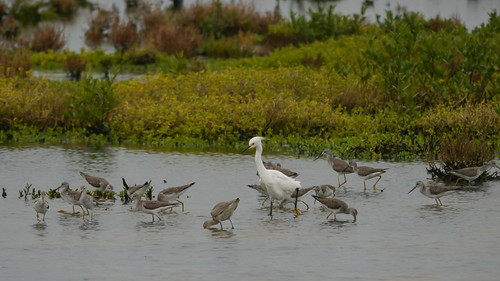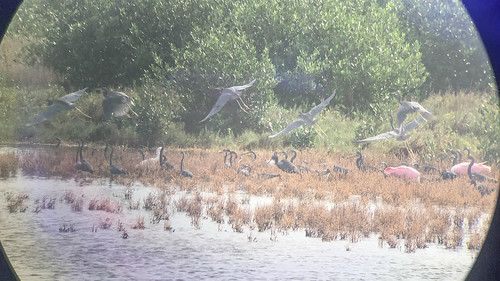Bird Language Observations 2015-11-15
I've been interested in Bird Language for the past year or so. As a learning aid for me and an easy way to share some concepts, I might try making journal posts here that are associated with eBird checklists, but reflect on Bird Language observations made while keeping the checklist.
eBird Checklist: http://ebird.org/ebird/view/checklist?subID=S25838866
Weather: overcast and cool, in the mid-fifties, light wind
Where: backyard
As I started the checklist I heard a Cooper's Hawk call in the northwest corner of my backyard. I have often heard this call from that corner and I've never been sure if it's an actual Cooper's Hawk or a Blue Jay imitating one. (They often do.) I heard a second Cooper's Hawk call nearby from the north. (Neither was far away, just on the adjacent properties.) I could hear Carolina Chickadees and Black-crested Titmice calling to each other in a mixed-species flock nearby to the west. This sounded like base-line contact calling to me -- no urgency about it. So it would support the Cooper's Hawk calls being Blue Jays instead of a real threat to the chickadees and titmice. I walked over to my north fence line and was able to see Blue Jays in the areas the Cooper's Hawk calls came from. I didn't actually see the Blue Jays make the calls, but I was convinced it was them.
Blue Jays make noise all the time. It's hard to determine if they're actually alarming about something, trying to make other birds feel alarmed, or just in a baseline state. In fact, the Bird Language material says corvids are not good examples to learn from. But I can't resist watching them and listening to them anyway, and thinking about it. Later, over my south fence line a Blue Jay was casually calling (the jeer call) at a slow rate without a pattern. Across the street to the east another Blue Jay started jeer calling in a much more regular and slightly faster pattern. Immediately the first bird jeered a couple times in a much more frantic sounding tone and flew towards the second bird. I walked over to investigate and by that time all the Blue Jays were quiet but active in the tree tops, seemingly foraging and in baseline. Was this an actual short alarm? I don't know. But it makes me think that the subtleties to their jeer calls are very significant. A recent thought I've had is that often these casual-sounding jeer calls are long-distance contact calls, much louder than the soft contact calls small songbirds make to each other in foraging flocks.










